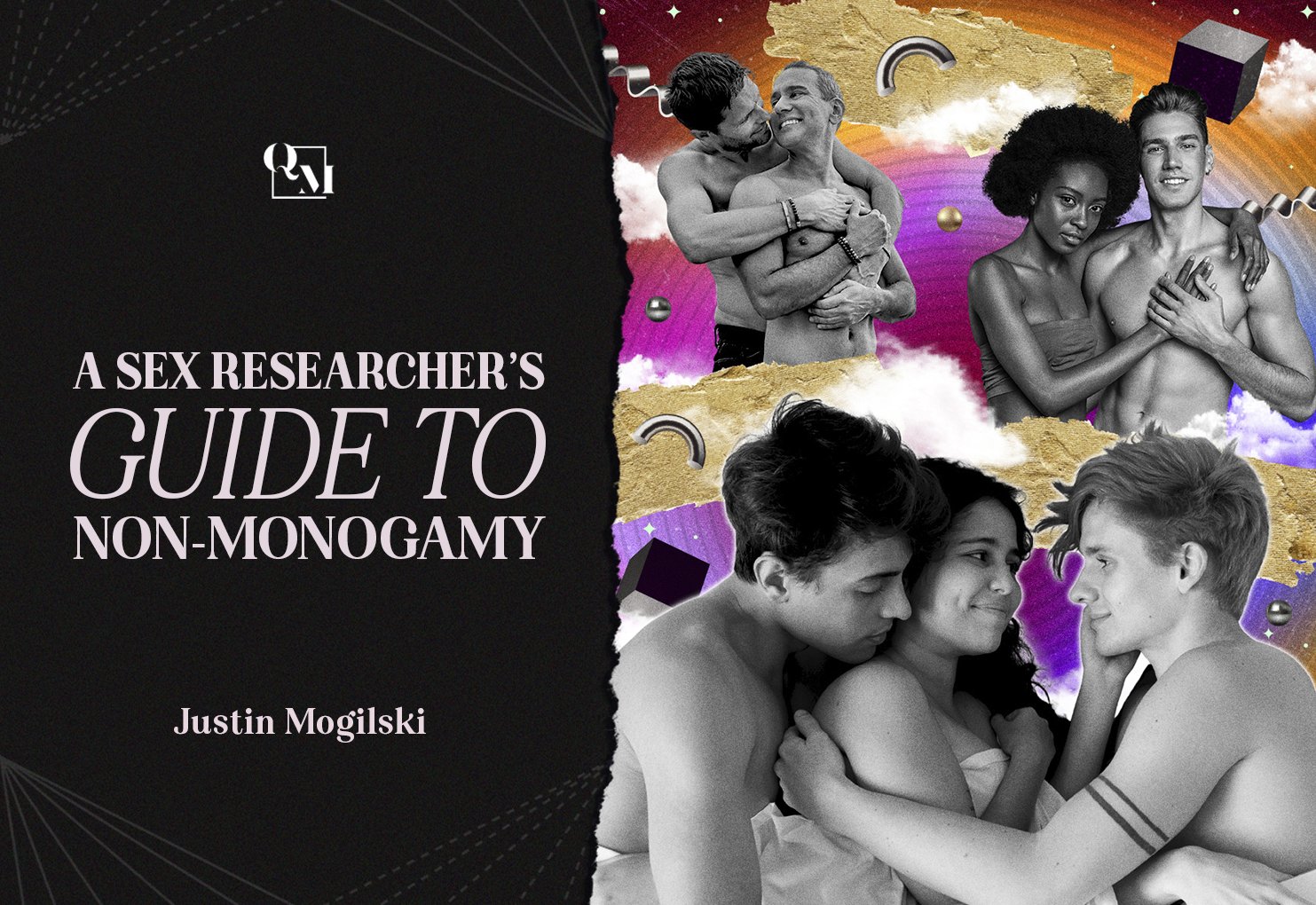Bisexuality Isn’t Just Misunderstood — It’s Misdefined
Western societies are facing an inflection point as the pendulum swings away from liberal values and toward authoritarian populism. One result is that the hard-won acceptance of LGBT people is increasingly under threat in some parts of the West. The question of how best to advocate for LGBT folks remains a topic of contention, from outside and within queer communities. It may be time for a paradigm shift in the way we conceptualise queerness and the LGBT “community”, and I believe that bisexual people, as individuals who understand both the straight and gay worlds, are uniquely well placed to lead this shift.
As a gay man, my path to self-acceptance and pride was anything but straightforward. In my early 20s, after much anguish, I pulled myself out of the closet and slammed the door behind me. I am incredibly grateful to have been raised by warm, loving parents who remain my greatest supporters, and to have grandparents who, despite having been born and raised in 1940s Greece, embraced my partner like a son. Still, I grew up acutely aware that the cultural scripts of the Greek Orthodox community I was raised in cast my sexuality as something to hide. Being openly gay carried a quiet kind of moral injury. I noticed the undue attention that was paid to me. I was treated as “different”, which was true, but the tone was not one of acceptance but of pity. It was seen as a waste that I wouldn’t live the traditional life of marrying a woman with whom I would have my own children. My hometown of Adelaide, a fairly conservative Australian city, also had more than its fair share of homophobia, much of which, as a young man, I internalised.
But after much soul-searching and growth, I found peace, pride, and self-understanding. I read and explored, built a community around me, pursued relationships, and committed myself to owning the life I wanted to lead. I was even inspired to begin a PhD in the sexual orientation space, which has led me to an exciting new project that I hope can help deepen the understanding of LGBT people — and bisexuality sits at the center of it.
why bisexuality is so misunderstood — and how to fix it
Our research group at the University of Sydney’s School of Psychology, led by esteemed experts in issues surrounding sexuality, gender, and culture, is investigating whether bisexuality — generally understood to be the attraction to both sexes — may be more helpfully conceptualised as an umbrella term for a variety of distinct orientations. We are conducting a range of studies exploring individuals’ experiences of sex, relationships, wellbeing, and stigma to understand not only the tapestry that is bisexuality, but the many threads that comprise it. We are currently recruiting for this study and welcome readers to participate by following this link and sharing it within your networks.
When we start to debate whether sexual orientation is rigidly categorical or operates on some kind of continuum, the question arises: is bisexuality just an “infinite spectrum”? On the one hand, it’s not particularly helpful to consider sexuality as a scale in which each bi person sits at a precise midpoint between gay and straight. On the other hand, it would be equally unhelpful to assume that categorical classification systems don’t work — because scientifically, clinically, and conceptually they often do. Even the more nuanced Kinsey scale, in which 0 represents exclusive heterosexuality, 6 represents exclusive homosexuality, and 1 through 5 represents the different degrees of bisexuality, did not enable the breakthrough in public understanding that many early bi voices had hoped for. Bisexuality is still widely misunderstood.
We propose that bisexuality is better understood as a category that contains multiple, somewhat distinct groups of individuals — groups that perhaps each have their own spectra within them. Think of it this way: We use one word — “bisexual” — to describe a host of different people with varied experiences of sexual attraction, behaviour, fantasy, and, for many, personally meaningful romantic preferences. They may have something in common in the most zoomed-out view — an openness to both sexes — but they may not have much in common outside of that. There are important differences in the etiology of different types of bisexuality, sexual arousal patterns, developmental trajectories, preferences for sexual and/or romantic partners, and desires for sexual acts — just to name a few.
The Varieties of Bisexual Experience
It’s reasonable to wonder then what this diversity looks like — beyond the overly broad and potentially limiting link of “being attracted to both men and women.” For some, bisexuality may represent the experience of some kind of attraction to specific sexual activities or adventures, regardless of their partner’s sex. For others, bisexuality may be about the possibility of change in their current attraction at some point in the future (known as sexual fluidity). For others still, bisexuality is primarily oriented around emotional or romantic elements. And perhaps bisexuality might also represent some kind of sexual and/or romantic attraction to transgender men and/or women — manifesting in an interest to engage with partners who are at various stages of their transition.
In addition, some who identify as bisexual have more complex sexual orientations that are secondary to their bisexuality — for example, they might have romantic or sexual thoughts about themselves. It is also well known that bisexuality is common in swinger communities. In turn, non-monogamy and polyamory might be fundamental elements in guiding some individuals towards understanding themselves to be bi.
I suspect that this diversity is just the tip of the iceberg and that past research, with its often-implicit focus on bisexuality as indicative of attraction to both men and women, may have lost touch with the contemporary bisexual experience. Perhaps bisexuality represents an exciting constellation of psychological traits, sexual attractions and interests, and romantic elements.
Why Bisexuality Has Been Difficult to Study
It’s fair to ask: when two people are different, but both call themselves bisexual, can we learn more by understanding the diversity rather than focusing solely on a single perceived common feature — and one that may not even be central for some? In some contexts, yes — because despite differences, bi people often face certain shared experiences. In other contexts, however, a one-size-fits-all approach can be misleading. For decades, studies often treated “bisexual” as a single box. Researchers would group together anyone who ticked the “bisexual” box (or infer their sexuality based on their position on some kind of spectrum) and either lump them with gay and lesbian individuals or compare them to gay or straight individuals on some outcome (like mental health). Making things even messier, these researchers usually didn’t separate people by sex either.
Not surprisingly, the bisexual group has often shown distinct patterns — frequently, bisexual folks experience greater anxiety and depression and have poorer sexual health compared to their gay and straight counterparts. These findings have been used to paint a picture of bi people as uniquely troubled or at-risk. However, when we recall how heterogeneous the bi population is, you have to ask: Who exactly were these studies talking about?
Lumping distinct subgroups together masks what’s really going on for each. Treating all bi folks as one undifferentiated cohort sets us up for a perpetual downward spiral; one where we misunderstand individuals, misdiagnose challenges, and fail to identify appropriate solutions.
Is the incredible diversity within the "B" of LGBT best understood by being lumped together?
The Real-World Consequences of Redefining Bisexuality
Understanding the diversity within bisexuality isn’t just an academic exercise; it has real implications for improving the lives of bi people. Flattening the heterogeneity of individuals who identify as bisexual to a single dimension leaves some to wonder if they belong at all. This is something known all too well by many bi people who face a double bind, accused of "not being queer enough" to be part of the queer community, but too "too queer" to be part of the straight community.
Stereotypes persist, in part, because people have a particular idea of what it means to be bisexual — one that aims to be broad enough to be all-inclusive, but that vaguely describes so many diverse subgroups as to be too narrow in practice. The bisexual woman married to a man is sometimes labelled “straight”; her bisexuality is dismissed as if it spontaneously vanished upon marriage. The bisexual man who’d only had long relationships with women may be labelled “curious”; his relationships with men are dismissed as meaningless. This harmful gatekeeping happens because of the assumption that there’s only one legitimate way to be bi. Meanwhile, no one really knows what this “one way to be” actually is.
As a result, we witness a culture of hypervigilance and self-censorship. Bi individuals often feel the need to conform to rigid expectations of bi attraction and behaviour to "prove" their bi-ness. If they deviate from these norms, they open themselves up to external judgment.
By highlighting bisexual diversity, we aim to push back against this narrow, prototypicality-focused tradition and the personal alienation it can generate. When we acknowledge that there are multiple pathways to bisexuality, and in turn different ways to be bisexual, we make room for people to explore their sexuality, have their experiences respected, and importantly, increase self-understanding. These discussions represent a commitment to a more nuanced understanding of what it means to be bi, in challenge to oversimplified narratives about sexual orientation — narratives that for many people don’t hold true.
Scientifically, a more comprehensive understanding of bisexuality improves theories and models, encourages better research, and informs more appropriate clinical approaches. Understanding the shared but also unique challenges that are faced by different groups of bi individuals will allow the less prototypical ones to realise they are not alone or idiosyncratic. It is also vital in health care settings. For example, a bi man who is very happily polyamorous would have distinct sexual health needs from the bi woman who is only interested in having a monogamous relationship with a woman.
Likewise, a psychologist or counsellor who is providing support to two bi people as they come out to their conservative families will be better equipped to offer tailored support if the depth of our understanding of bisexuality incorporates richer nuance, which is only possible if we take the time to identify the common and distinct needs of specific subgroups of individuals who use the bisexual label. The needs of an individual feeling rejected by both straight and gay/lesbian people may be quite different from the needs of a person who identifies as bi, primarily due to their sexual attraction to trans people and the unfortunate stigma they face because of it.
We need to simultaneously unify and differentiate ourselves. At the heart of this proposed paradigm shift is the need to open the discourse around sexual orientation. This is not just about redefining labels or splintering groups; it’s about no longer painting with too broad a brush to capture the true variety of queer experience.
The pioneering sex researcher of bisexuality, Fritz Klein, said that “Understanding bisexuality is the key to understanding sexual orientation.” I quite agree. In turn, by breaking free from narrow framings and embracing the diversity within bisexuality, we pave the way for a deeper understanding of LGBT people globally. Bi people are the sexual ambassadors the world needs right now. It’s time we better understood them.
If you’d like to participate in the research study, click here.
Published May 13, 2025








